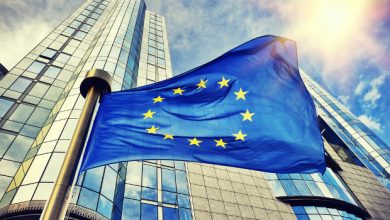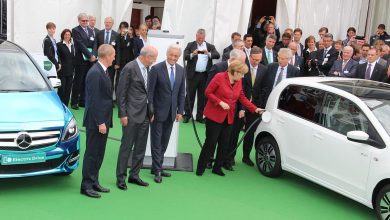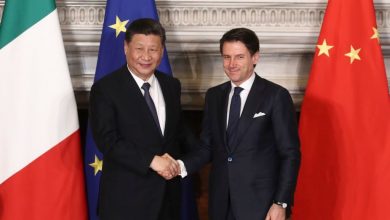Sustainable Economic Growth in the EU: How Do We Get There?

Economic growth has generally been considered disappointing in the EU. The region’s many economic advantages suggest it could be higher: it is the world’s largest single market area, it has a highly educated labour force, a consistent legal framework, and political stability. Despite this, growth has been anaemic, generally under 2% per annum in recent years. Unemployment remains high, over 7% continent-wide and considerably higher in disfavored areas. Most importantly, the EU’s population remain pessimistic about their future, with birth rates below the rate of population maintenance.
The most widely discussed remedies to the EU’s economic stagnation, especially by Anglo-Saxon economists, are low interest rates and fiscal stimulus. Low interest rates, with a brief hiatus in the period 2010 to 2012, have been tried. Many rates are now below zero, rewarding borrowers who take out loans with smaller amounts to reimburse. Still, borrowing money has risks if it is not used in manners which increase its value. It would appear that, after several years of low rates, European businesses have run out of new projects with positive returns and borrowing, and consequent increases in economic activity have once again slowed.
Recognizing this, economists have turned to fiscal stimulus as the remedy of choice. Fiscal stimulus, the excess of government spending over revenues, will give a short term boost to economic activity. The aim is to generate a virtuous cycle where those newly employed by the stimulus will generate further economic activity through their spending and additional tax contributions. The problem here is the same as that of low interest rates. The new activities generated must be self-sustaining, in the sense that they increase productivity and revenues. If they are not, they will simply create additional debt burden and cause the economy to slow once the additional stimulus is passed through.
Constraints to Productivity Growth
There are some natural constraints to productivity growth in the EU region which must be addressed before the remedies to slow economic growth bear fruit. A shortage of natural resources and energy dictates that the continent can not generate growth without increasing imports of raw materials and energy. But to import what it needs without further indebting itself to foreigners, Europe must increase its exports to pay for the additional imports. It must, therefore, remain competitive in markets and look to expand those markets if it wishes to sustain its own growth.

This is not totally within Europe’s control and, consequently, the ability to export successfully is an upward constraint on Europe’s domestic growth. Economists who talk about lowering interest rates or fiscal stimulus without taking into account the reliance on world markets are simply missing the point. When world markets are growing Europe will have no difficulty sustaining its own growth. When they are moribund effective stimulus will be well nigh impossible.
The Way Around the Growth Impasse
Trade agreements for regions like the European one are essential to maintain regular access to markets and obtain needed commodities. However, they cannot resolve this impasse on their own, as they can’t guarantee competitiveness or the vitality of foreign economies. There is only one sustainable solution to further economic growth in the long term: to invest in research, sustainable energy, food production and more efficient use of raw materials.
Besides helping the planet, such research will allow Europe to grow at its own chosen pace without imports. Once growth can be generated internally without requiring an increase in essential imports, techniques like interest rate policy and fiscal stimulus can be used to full effect. There is no magic wand of economic policy for sustainable growth if the right productive investments are not being made.
Rallying Around The European Project
An important aspect of any economic policy is public assent. Successful policies – most often defined, unfortunately, in today’s short-term mindset – entail some sort of job creation, wealth effect and a general feeling of well being and optimism for the future. A successful policy in these terms usually brings assent in its aftermath regardless of its long term vision or sustainability.
Getting the public to agree to a policy based on a vision of the future, one which requires sacrifices, investment and research with little immediate impact is difficult in democratic societies. To some degree, this is understandable as a job is a necessity today, not once the research and investment bear its fruits. For this reason, despite some misgivings, a stimulus project on a European scale might also be appropriate, especially if a productive policy is not chosen.
The building of a new European capital with the participation of all the Member States is a project which can rally the public to the EU idea and provide an immediate stimulus to jobs and incomes. It has the disadvantages of other stimulus projects in leading to a deterioration in the balance of payments but since such a project would be labour-intensive, these effects should not be too large. Investment in a new capital also brings with it some small efficiencies which can help pay for it while awaiting the fruits of investment in energy, raw material and agricultural research. The hoped-for rallying around a vision of Europe can not be discounted only in financial terms.

Alternative EU-wide stimulus projects can be envisaged. Building on the success of the Airbus Industries, space exploration could be expanded beyond that now undertaken by ESA. Future space colonies could be prepared and undertaken. However, I prefer to be more down to earth myself and a greatly enhanced effort in space would have one important disadvantage: it would employ few people per euro invested.
More and faster high-speed rail, especially given the environmental concerns associated with flight, is another possibility. Regreening and reforesting Europe is another stimulus project which the unemployed and school-aged alike could participate in.
A Vision For The Future
Endless economic growth is not always a goal worth pursuing. With growth comes environmental degradation, overcrowding, loss of natural habitats and other undesirable consequences. Some growth at a minimum is probably desireable to absorb the pool of unemployed and to facilitate the adoption of and transition to new more efficient technologies as they emerge.
Europe may well wish to forego rapid economic and demographic growth and the ensuing economic competition with the United States and China, in preference for a more sustainable and greener continent. Europe is already a crowded continent with a population of 103 people per square kilometre, compared to 36 in the USA. Only India (416), Indonesia (149) and China (145), among large countries, are more crowded. Vast regions of the world: Australia (3), Canada (4), Russia(8), Brazil (35), and many areas of Africa, are much less densely populated.
A choice of sustainable greener growth will require new social, economic and legal tools to realize it. True federalism would certainly facilitate the complex social, economic, and political choices as well as their implementation. So hopefully would a new federal capital. Whatever its vision of the future, however, Europe will need greater energy, food and raw material self-sufficiency to realize it.





